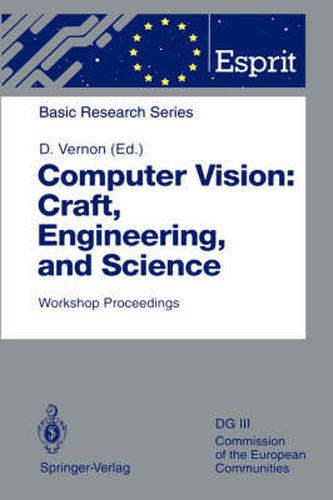Readings Newsletter
Become a Readings Member to make your shopping experience even easier.
Sign in or sign up for free!
You’re not far away from qualifying for FREE standard shipping within Australia
You’ve qualified for FREE standard shipping within Australia
The cart is loading…






This title is printed to order. This book may have been self-published. If so, we cannot guarantee the quality of the content. In the main most books will have gone through the editing process however some may not. We therefore suggest that you be aware of this before ordering this book. If in doubt check either the author or publisher’s details as we are unable to accept any returns unless they are faulty. Please contact us if you have any questions.
This volume assesses approaches to the construction ofcomputer vision systems. It shows that there is a spectrumof approaches with different degrees of maturity androbustness. The useful exploitation of computer vision inindustry and elsewhere and the development of the disciplineitself depend on understanding the way these approachesinfluence one another. The chief topic discussed is autonomy. True autonomy may notbe achievable in machines in the near future, and theworkshop concluded that it may be more desirable - and iscertainly more pragmatic - to leave a person in theprocessing loop. The second conclusion of the workshop concerns the manner inwhich a system is designedfor an application. It was agreedthat designers should first specify the requiredfunctionality, then identify the knowledge appropriate tothat task, and finally choose the appropriate techniques andalgorithms. The third conclusion concerns the methodologies employed indeveloping vision systems: craft, engineering, and scienceare mutually relevant and contribute to one another. The contributors place heavy emphasis on providing thereader with concrete examples of operational systems. Thebook is based on a workshop held as part of the activitiesof an ESPRIT Basic Research Action.
$9.00 standard shipping within Australia
FREE standard shipping within Australia for orders over $100.00
Express & International shipping calculated at checkout
This title is printed to order. This book may have been self-published. If so, we cannot guarantee the quality of the content. In the main most books will have gone through the editing process however some may not. We therefore suggest that you be aware of this before ordering this book. If in doubt check either the author or publisher’s details as we are unable to accept any returns unless they are faulty. Please contact us if you have any questions.
This volume assesses approaches to the construction ofcomputer vision systems. It shows that there is a spectrumof approaches with different degrees of maturity androbustness. The useful exploitation of computer vision inindustry and elsewhere and the development of the disciplineitself depend on understanding the way these approachesinfluence one another. The chief topic discussed is autonomy. True autonomy may notbe achievable in machines in the near future, and theworkshop concluded that it may be more desirable - and iscertainly more pragmatic - to leave a person in theprocessing loop. The second conclusion of the workshop concerns the manner inwhich a system is designedfor an application. It was agreedthat designers should first specify the requiredfunctionality, then identify the knowledge appropriate tothat task, and finally choose the appropriate techniques andalgorithms. The third conclusion concerns the methodologies employed indeveloping vision systems: craft, engineering, and scienceare mutually relevant and contribute to one another. The contributors place heavy emphasis on providing thereader with concrete examples of operational systems. Thebook is based on a workshop held as part of the activitiesof an ESPRIT Basic Research Action.